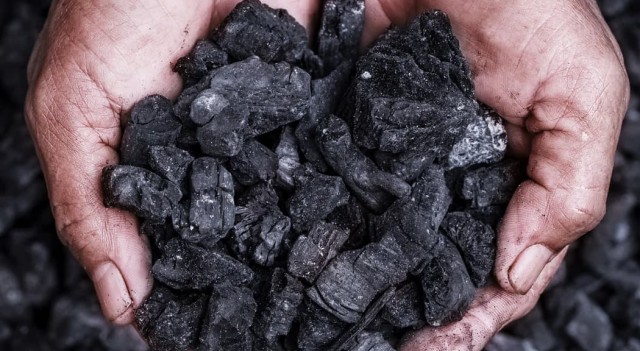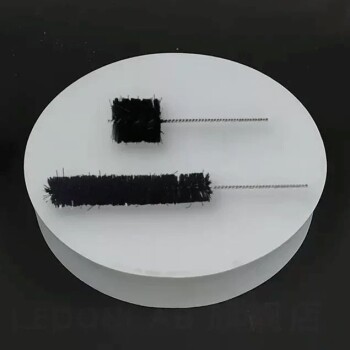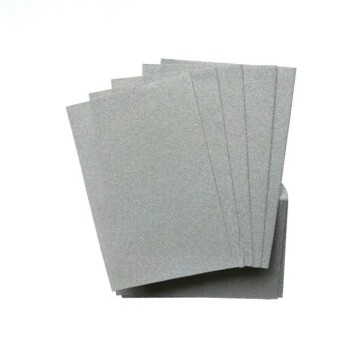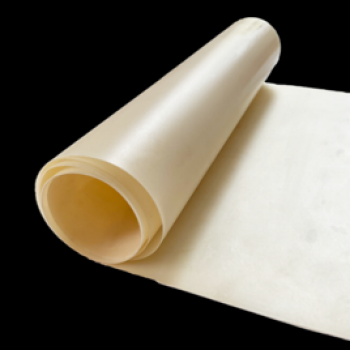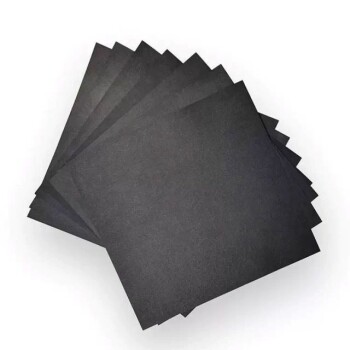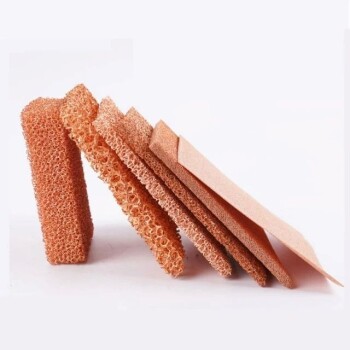What is activated carbon
Activated carbon, also known as activated charcoal, is a form of carbon that has been processed to have a high surface area and high pore structure. It is made from a variety of materials, including wood, coal, and coconut shells, that are carbonized and then treated with an oxidizing agent, such as steam or air, to increase the surface area and porosity.
Activated carbon has a highly porous structure, with many small, interconnected pores that give it a large surface area. This allows it to adsorb, or attract and retain, a wide range of impurities and contaminants from gases and liquids. It is commonly used in a variety of applications, including water purification, air purification, and the removal of contaminants from industrial process streams.
Activated carbon is a highly effective adsorbent and is used in a wide range of industries, including the chemical, pharmaceutical, food and beverage, and environmental industries. It is also used in consumer products, such as water filters and air purifiers.
Why Activated Carbon Regeneration
Activated carbon regeneration is the process of restoring the adsorption capacity of used or spent activated carbon. Activated carbon becomes less effective at adsorbing impurities over time as it becomes saturated with contaminants. When this happens, the activated carbon must be regenerated to restore its adsorption capacity.
There are several reasons why activated carbon regeneration is necessary:
- Cost: Regenerating used activated carbon is generally less expensive than purchasing new activated carbon, making it a cost-effective option.
- Sustainability: Regenerating used activated carbon instead of disposing of it and purchasing new activated carbon helps to reduce waste and conserve resources.
- Performance: Regenerating used activated carbon can restore its adsorption capacity, allowing it to perform at its optimal level.
Overall, activated carbon regeneration is an important process that helps to ensure the efficient and cost-effective use of activated carbon, while also promoting sustainability and optimal performance.
Common activated carbon regeneration methods
There are several common methods used to regenerate activated carbon:
Activated carbon thermal regeneration
The thermal regeneration method can be generally divided into three stages, the first being the drying stage of the saturated activated carbon. The used activated carbon contains a large amount of water, which is about 50 %. The drying stage evaporates the water in the pores and the low boiling point organic matter by means of heating.
Next is the carbonization stage of the adsorbed material. The temperature of this stage is within 350°C. The purpose of this stage is to carbonize the volatile substances in the pores of the activated carbon and the organic substances with high boiling points, and the organic substances with high boiling points are decomposed and charred in the pores of the activated carbon.
Finally, the activated carbon is activated. In this stage, the temperature is between 800 and 1000℃, and the carbon left in the previous stage is oxidized by carbon dioxide and water vapor to make it decompose. Some scholars used this method to regenerate the used activated carbon of a pharmaceutical company, and improved the process to achieve the best conditions, which showed that the yield of regenerated activated carbon could reach 86.9 % and the decolorization rate could reach 99.94 %.
The thermal regeneration method has the advantages of short process time, high regeneration rate, and no choice of the previous use of waste activated carbon. The thermal regeneration method has the advantages of short process time, high regeneration rate, no selectivity for the previous use of waste activated carbon, universal use of activated carbon recovery for various applications, and no waste liquid generated during the regeneration process. The regeneration process does not produce any waste liquid. The main pollution generated is the exhaust gas pollution.
Electric Activated Carbon Regeneration Furnace is the main equipment for activated carbon thermal regeneration.
Solvent regeneration
The basic principle of solvent regeneration method is to break the equilibrium relationship between activated carbon, adsorbent and solvent, mainly by changing the pH, temperature and humidity in the solvent, so that the original phase equilibrium relationship is broken and the adsorbent is desorbed from the activated carbon.
The solvent regeneration method can be divided into inorganic solvent regeneration method and organic solvent regeneration method according to the different solvents used, which can be realized mainly by the following methods: changing the nature of the adsorbent through the interaction between the solvent and the adsorbent; using a solvent whose affinity for the adsorbent is greater than the affinity of the activated carbon for the adsorbent The sorbent is extracted with a solvent that has a greater affinity for the sorbent than the activated carbon.
The solvent regeneration technique produces mainly inorganic acidic or alkaline waste streams and organic waste streams, of which the inorganic waste streams can be treated by neutralization.
biological regeneration
Bioregeneration has a long history and has been used in several traditional fields since the 1970s. The biological regeneration method has been widely used in many traditional fields since the 1970s.
The main idea of bioregeneration is to treat waste activated carbon with cultured strains of bacteria, which decompose the adsorbed material and turn it into water and carbon dioxide for the purpose of regenerating waste activated carbon.
The microporous structure of activated carbon has a small pore size, the smallest pore size is only a few nanometers, so the bacterium can not enter, therefore, the regeneration process of microorganism cell autolysis, the cell enzyme in the microorganism will attach to the surface of activated carbon to form an enzymatic center, so that the adsorbent decomposition, and finally achieve the purpose of regeneration.
Wet oxidation regeneration method and catalytic wet oxidation regeneration method
The wet oxidation regeneration method was originally applied mainly in wastewater treatment, where air or pure oxygen is introduced to oxidize the adsorbed material in the liquid phase. The wet oxidation regeneration method was originally applied to wastewater treatment by introducing air or pure oxygen to oxidize and decompose the adsorbed material in the spent activated carbon in the liquid phase.
Wet oxidation regeneration is carried out at high temperature and pressure and is generally divided into two stages, namely the oxygen transfer control stage and the reaction kinetics control stage.
The catalytic wet oxidation regeneration method, on the other hand, improves the regeneration efficiency and reduces the energy consumption of the wet oxidation regeneration method by adding a catalyst.
The wet oxidation regeneration process of copper catalysts prepared by impregnation with non-homogeneous catalytic waste activated carbon can improve the regeneration efficiency by 10 % and reduce the regeneration time by 10 % compared to the uncatalyzed process.
This method will have dust and solid waste pollution, for these solid wastes need to implement the integrated management of generation, collection and storage, and the hazardous waste generated in the process can be handed over to the relevant qualified The hazardous waste generated in the process can be handed over to qualified units for treatment.
Electrochemical regeneration
There are two main process pathways for electrochemical regeneration, the difference between the two is the reactor used. One is an intermittent stirred tank reactor and the other is a fixed bed electrochemical reactor.
Electrochemical regeneration is not a simple two-dimensional electrode system, but a three-dimensional repolarized electrode system. Under the action of external electric field, the activated carbon will be repolarized, forming a large number of micro electrolytic cells, and the particles adsorbed on these repolarized activated carbon will undergo redox reactions.
Because of the huge number of micro electrolytic cells, a high regeneration efficiency can be achieved. The electrochemical regeneration method can achieve regeneration efficiencies of 90 % +.
The potential pollutant of this method is the leakage or emission of electrolyte. The electrolyte is generally selected as acidic or alkaline medium, so the corresponding alkaline solution or acidic solution can be selected to neutralize and treat the electrolyte when it is treated and then discharged to a unit with relevant qualification for wastewater treatment for subsequent treatment.
Microwave ultraviolet radiation regeneration method
The microwave UV radiation regeneration method is to add UV light irradiation to convert the desorbed organic matter into dioxygen carbon dioxide and water and other simple inorganic substances, and UV light irradiation can further enhance the microwave method The thermal effect of the microwave method.
The regeneration rate of activated carbon adsorbed with sodium nitrobenzene sulfonate can reach more than 99% at a power of 500 w and an air flow rate of 0.024 m3/h using microwave UV.
The main pollution from the microwave UV regeneration method is the waste gas pollution, including unreacted adsorbent and the carbon dioxide and water after the reaction, which can be treated by tail gas treatment to repeat the reaction of unreacted adsorbent and purify the tail gas after complete reaction.
Which to choose
There are several factors to consider when choosing an activated carbon regeneration scheme:
- Cost: The cost of the regeneration scheme, including the initial investment in equipment and ongoing operating costs, should be considered.
- Capacity: The capacity of the regeneration scheme, or the amount of activated carbon it can regenerate in a given period of time, should be considered in relation to the facility's needs.
- Efficiency: The efficiency of the regeneration scheme, or the amount of impurities and contaminants it can remove from the activated carbon, should be considered.
- Environmental impact: The environmental impact of the regeneration scheme, including any emissions or waste generated, should be considered.
- Regulatory requirements: Any regulatory requirements or standards that must be met should be considered when choosing a regeneration scheme.
Overall, it is important to carefully evaluate the costs, capacity, efficiency, environmental impact, and regulatory requirements of different activated carbon regeneration schemes to determine the best option for a given facility.
ON-SITE VS. OFF-SITE
Activated carbon regeneration can be performed either on-site or off-site, depending on the needs and resources of the facility using the activated carbon.
On-site activated carbon regeneration refers to the process of regenerating used activated carbon at the facility where it is being used. This allows the facility to regenerate the activated carbon as needed, without the need to transport it to an external location. On-site regeneration can be more convenient and cost-effective, as it reduces the time and expense of transportation.
Off-site activated carbon regeneration refers to the process of regenerating used activated carbon at a separate location, such as a regeneration facility or a third-party service provider. This may be necessary if the facility does not have the equipment or resources to perform the regeneration on-site. Off-site regeneration may be more expensive due to the added cost of transportation, but it can be a good option for facilities with a limited amount of used activated carbon that does not justify the cost of on-site regeneration equipment.
Overall, the decision to perform activated carbon regeneration on-site or off-site will depend on the specific needs and resources of the facility using the activated carbon.
CONCLUSION
Overall, activated carbon regeneration technology can help to reduce costs, promote sustainability, improve performance, and offer convenience in the use of activated carbon.
If you have questions about equipment selection, please contact us
Related Products
- Electric Rotary Kiln Small Rotary Furnace for Activated Carbon Regeneration
- Conductive Carbon Fiber Brush for Static Removal and Cleaning
- Cylindrical Resonator MPCVD Machine System Reactor for Microwave Plasma Chemical Vapor Deposition and Lab Diamond Growth
- Microwave Plasma Chemical Vapor Deposition MPCVD Machine System Reactor for Lab and Diamond Growth
- Vacuum Sealed Continuous Working Rotary Tube Furnace Rotating Tube Furnace
Related Articles
- Electric Rotary Kiln Pyrolysis Furnace: A Comprehensive Guide to Pyrolysis Technology
- A Comprehensive Guide to Rotary Kilns: Applications, Types, and Working Principles
- Rotary Furnaces: A Comprehensive Guide to Advanced Materials Processing
- 6 Ways To activated carbon regeneration
- Optimizing Industrial Processes: Rotary Kiln and Laboratory Furnace Solutions
